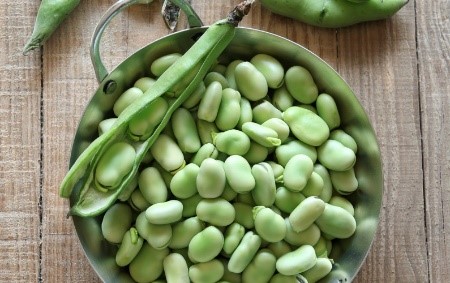F8i / 16B14 : Describe the features of a RBC that facilitate O2 transport
16B14: Exam Report
Describe the features of a red blood cell that facilitate oxygen transport
33% of candidates passed this question.
This question was best answered by considering form and then function. Detailing red cell size, that it is a biconcave disc, contains haemoglobin A (Hb F in-utero), has a central Fe moiety and demonstrates positive cooperativity in binding oxygen would be a good start. Additionally, noting that the RBC has a flexible membrane with shape maintained by structural proteins and that it lacks a nucleus, organelles and mitochondria, but contains carbonic anhydrase would pass this question.
A complete answer would mention the3 shunts that come off the anaerobic glycolytic pathway (RBC’s only means of ATP generation), namely the production of 2-3 DPG via the Rapoport-Luebering shunt, generation of NADPH by the hexose monophosphate shunt (protects RBC from oxidative damage) and the reduction of metHb back to Hb by way of the NADH.
Many answers lacked sufficient information to pass this question.
Many answers included lengthy discussions about the production of RBC’s, the Oxy-haemoglobin dissociation curve or calculated the oxygen content of blood. RBC metabolic adaptations (e.g. 2, 3-DPG, NADPH production by the HMP shunt/ G6phosphatase to regenerate glutathione and metHb reductase) were rarely mentioned, as were vasodilatory mediators released by RBCs.
F8i / 16B14: Describe the features of a RBC that facilitate O2 transport
Definition
RBC = the most common type of blood cell and is the 1° means of delivering O2 to tissues for anaerobic metabolism
Structure
- A mature RBC is a flexible biconcave disc that lacks a nucleus & organelles
- Biconcave shape → gives it a large SA which ↑ability to allow O2 diffusion
- small 7.5µm wide, 2µm thick & notoriously deformable → allows them to enter tiny capillaries, changing shape & delivering O2
- Anucleus & eject many organelles inc. mitochondria when maturing
- Allows more room for O2 transport
- Uses less O2 ∴making more O2 available for pick up & delivery
- Contains enzyme CARBONIC ANHYDRASE
- Some CO2 is transported bound to Hb
- Majority is converted to HCO3–
H2O + CO2 ⮂ H2CO3 ⮂ HCO3– + H+
- Majority CO2 transported as HCO3– → catalysed by CA
- ∴This enzyme facilitates even more O2 carriage in RBC!
- There are very many of them!
- 20 – 30 trillion RBC at any given time in adult humans
- Allows massive amount of O2 transport
Haemoglobin
- Hb is the protein of RBC responsible for binding & transporting CO2 & O2
- Each RBC has 200 – 300 million molecules of Hb
- Hb made of 2 parts: heme + globin
- Heme mostly consists of PROTOPORPHYRIN RING & central iron in Ferrous State (Fe2+)
- 4 polypeptide chains determine type of Hb
- O2 binds reversibly to heme
- 4 hemes ∴each Hb carries 4 x O2
- Hb is allosteric protein → binding of one heme ↑affinity of remaining heme groups for O2
- This is KA +VE COOPERATIVITY
- Binding of O2 ‘relaxes’ the protein, allowing easier access for further O2=molecules to bind
- Each gram of Hb can transport 1.34mL O2 KA HUFFNER’S CONSTANT
- +ve cooperativity displayed by ODC:
Red Cell Metabolism
- Completely ANAEROBIC
- RBC requires ATP to maintain shape & integrity, regulate ion transport in + out of cell
- Metabolic needs of RBC met by 3 pathways:
- Embden – Meyerhof Pathway (glycolysis)
- Hexose Monophosphate Shunt
- Rapport – Luebering Shunt
- Glucose is the E source used to generate ATP
- Glucose enters RBC by GLUT-1 which does NOT depend on insulin for uptake
Embden-Meyerhof Pathway (Glycolysis)
- 1 glucose converted to 2 Pyruvate
- Forms 2 ATP
- E– released when Glyceraldehyde–3–P converted to 1,3 Diphosphoglycerate
- E– is accepted by NAD+
- Glycolysis cannot proceed without E– acceptor
- MetHb is the only sink for NADH
- NAD+ is regenerated by reduction of MetHb → Hb by MetHb Reductase Pathway
- Pyruvate is then converted into lactate
- Lactate transported to liver to make Glucose
↓
- Anaerobic ATP generation allows maximal O2 delivery/transport
Rappoport – Luebering Shunt
- Some 1,3 DPG is converted to 2,3 DPG by R – L shunt
- 2,3 DPG ↓affinity of Hb for O2 & promotes O2 offloading
Hexose Monophosphate Shunt
- RBC is subject to oxidative stress from exposure to drugs, chemicals & O2 transport
- Reactive O2 species (ROS) convert Fe2+ → Fe3+ generating MetHb
- Glutathione is a scavenger of ROS but is oxidised in the process
- Glutathione reductase regenerates Glutathione by donating an E– to NADPH
- The only non-mitochondria source of NADPH is the Hexose Monophosphate Shunt
- Approximately 10% glucose metabolised via this shunt, but in states of high oxidative stress, 90% may be
- The rate limiting step of this pathway is the G6P dehydrogenase
- G6PD deficiency is the most common enzyme deficiency causing haemolytic anaemia
↓
This pathway is essential for lifespan of RBC to ensure O2 delivery
Fava mic drop.
- Author: Krisoula Zahariou


